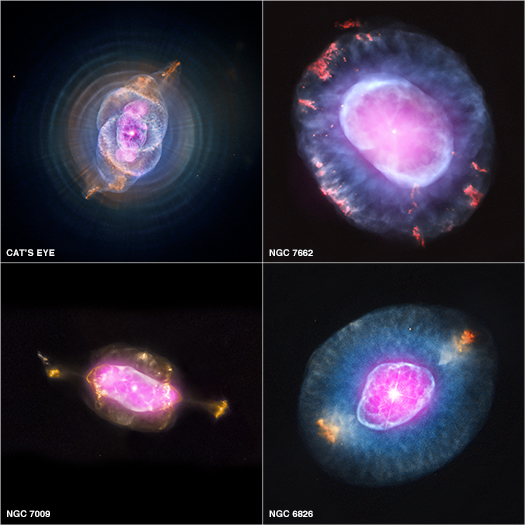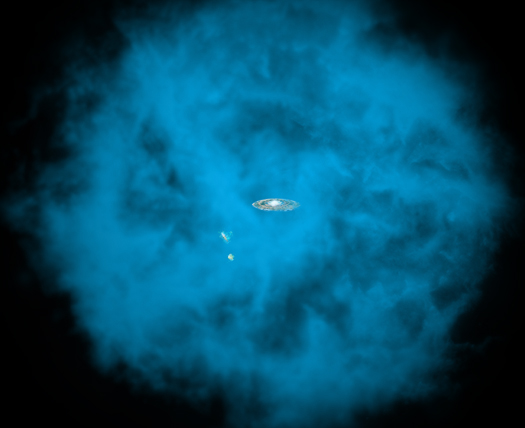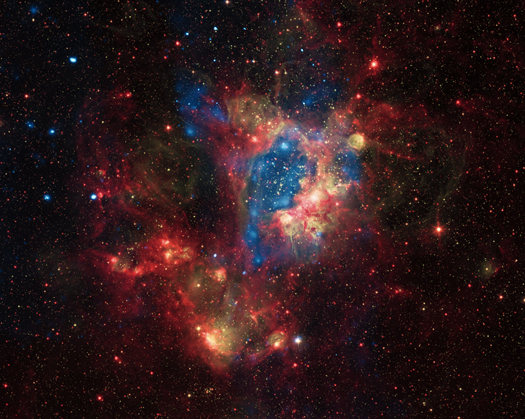The Bruce Medalists Wallace Sargent
Updated: 2012-10-31 14:02:00
 : The Bruce Medalists Photo 2006, courtesy Prof . Sargent Wallace Leslie William Sargent 15 February 1935 1994 Bruce Medalist Wal Sargent was the first person from his high school to attend a university . He studied fluid mechanics at the University of Manchester but with an eye toward applying it to theoretical problems in astrophysics . He has spent nearly all of his career at the California Institute of Technology where he has become a spectroscopist , observing peculiar stars , stars in the galactic halo , and peculiar galaxies and quasars . He is particularly renowned for investigations of quasar absorption lines which he now does with the Keck Magellan Chandra and Hubble Space Telescope s . He and his colleagues have contributed greatly to our knowledge of the intergalactic medium .
: The Bruce Medalists Photo 2006, courtesy Prof . Sargent Wallace Leslie William Sargent 15 February 1935 1994 Bruce Medalist Wal Sargent was the first person from his high school to attend a university . He studied fluid mechanics at the University of Manchester but with an eye toward applying it to theoretical problems in astrophysics . He has spent nearly all of his career at the California Institute of Technology where he has become a spectroscopist , observing peculiar stars , stars in the galactic halo , and peculiar galaxies and quasars . He is particularly renowned for investigations of quasar absorption lines which he now does with the Keck Magellan Chandra and Hubble Space Telescope s . He and his colleagues have contributed greatly to our knowledge of the intergalactic medium .
 Wallace Sargent , Ira S . Bowen Professor of Astronomy Caltech 249-17 Pasadena , CA 91125 374 Cahill Center phone : 626-395-4055 e-mail : wws at astro.caltech.edu The 200 inch Hale Telescope at the Palomar . Observatory Current Research Interests : One main aim is to study the evolution of large scale structure and the physics of the intergalactic medium at an epoch when the first stars and galaxies are forming and the baryons in the universe are largely in the form of hydrogen and helium gas . My main collaborators are Michael Rauch OCIW George Becker Kavli Institute , Cambridge and Bryan Penprase Pomona College Most of our work involves observations of Quasar Absorption Lines using the spectrographs on the two 10 meter Keck Telescopes in Hawaii and the 6.5 meter Magellan Telescopes at
Wallace Sargent , Ira S . Bowen Professor of Astronomy Caltech 249-17 Pasadena , CA 91125 374 Cahill Center phone : 626-395-4055 e-mail : wws at astro.caltech.edu The 200 inch Hale Telescope at the Palomar . Observatory Current Research Interests : One main aim is to study the evolution of large scale structure and the physics of the intergalactic medium at an epoch when the first stars and galaxies are forming and the baryons in the universe are largely in the form of hydrogen and helium gas . My main collaborators are Michael Rauch OCIW George Becker Kavli Institute , Cambridge and Bryan Penprase Pomona College Most of our work involves observations of Quasar Absorption Lines using the spectrographs on the two 10 meter Keck Telescopes in Hawaii and the 6.5 meter Magellan Telescopes at Subscribe Today Renew Give a Gift Archives Customer Service Facebook Twitter Newsletter SEARCH Health Medicine Mind Brain Technology Space Human Origins Living World Environment Physics Math Video Photos Podcast RSS From Particles to People : The Laws of Nature and the Meaning of Life DonorsChoose 2012 by Sean Carroll DonorsChoose is a great program that lets people give small or large , if that’s how they roll charitable donations targeted at specific classrooms and educational programs around the country . We have participated frequently in the past , but this year we didn’t quite get our act together . But it doesn’t matter who sets up the donors page , there are many great programs out there looking for . support So instead , this year we’re pointing people to Aatish Bhatia’s donor
Subscribe Today Renew Give a Gift Archives Customer Service Facebook Twitter Newsletter SEARCH Health Medicine Mind Brain Technology Space Human Origins Living World Environment Physics Math Video Photos Podcast RSS From Particles to People : The Laws of Nature and the Meaning of Life DonorsChoose 2012 by Sean Carroll DonorsChoose is a great program that lets people give small or large , if that’s how they roll charitable donations targeted at specific classrooms and educational programs around the country . We have participated frequently in the past , but this year we didn’t quite get our act together . But it doesn’t matter who sets up the donors page , there are many great programs out there looking for . support So instead , this year we’re pointing people to Aatish Bhatia’s donor One of the lowest mass supermassive black holes ever observed in the middle of a galaxy has been identified, thanks to NASA's Chandra X-ray Observatory and several other observatories.
One of the lowest mass supermassive black holes ever observed in the middle of a galaxy has been identified, thanks to NASA's Chandra X-ray Observatory and several other observatories.  Institute for Quantum Information and Matter Home About Blog Research Publications People Seminars Outreach Contact Welcome The Institute for Quantum Information and Matter IQIM at Caltech is a Physics Frontiers Center supported by the National Science Foundation and the Gordon and Betty Moore Foundation . IQIM researchers study physical systems in which the weirdness of the quantum world becomes manifest on macroscopic scales . Our research programs span quantum information science , quantum many-body physics , quantum optics , and the quantum mechanics of mechanical . systems IQIM Postodoctoral Fellowships To apply , visit the IQIM Postdoctoral Fellowship web page In the News David Hsieh , joined Caltech's physics faculty and IQIM in September . In an interview in Caltech Today Hsieh
Institute for Quantum Information and Matter Home About Blog Research Publications People Seminars Outreach Contact Welcome The Institute for Quantum Information and Matter IQIM at Caltech is a Physics Frontiers Center supported by the National Science Foundation and the Gordon and Betty Moore Foundation . IQIM researchers study physical systems in which the weirdness of the quantum world becomes manifest on macroscopic scales . Our research programs span quantum information science , quantum many-body physics , quantum optics , and the quantum mechanics of mechanical . systems IQIM Postodoctoral Fellowships To apply , visit the IQIM Postdoctoral Fellowship web page In the News David Hsieh , joined Caltech's physics faculty and IQIM in September . In an interview in Caltech Today Hsieh This gallery shows four planetary nebulas from the first systematic survey of such objects in the solar neighborhood made with NASA's Chandra X-ray Observatory.
This gallery shows four planetary nebulas from the first systematic survey of such objects in the solar neighborhood made with NASA's Chandra X-ray Observatory. Astronomers have used NASA's Chandra X-ray Observatory to find evidence our Milky Way Galaxy is embedded in an enormous halo of hot gas that extends for hundreds of thousands of light years.
Astronomers have used NASA's Chandra X-ray Observatory to find evidence our Milky Way Galaxy is embedded in an enormous halo of hot gas that extends for hundreds of thousands of light years. A superbubble in the Large Magellanic Cloud (LMC), a small satellite galaxy of the Milky Way, located about 160,000 light years from Earth.
A superbubble in the Large Magellanic Cloud (LMC), a small satellite galaxy of the Milky Way, located about 160,000 light years from Earth.